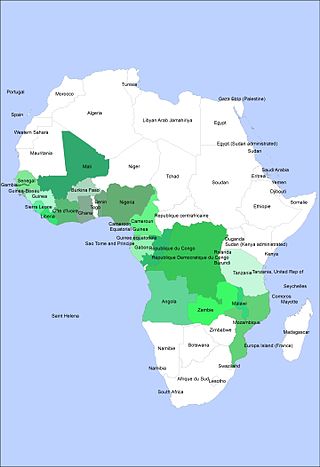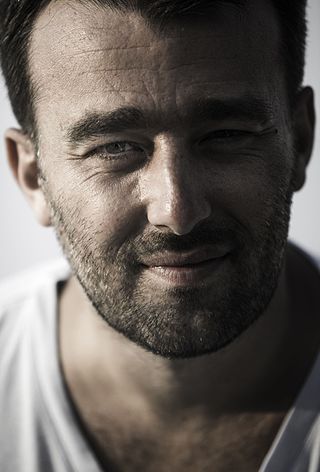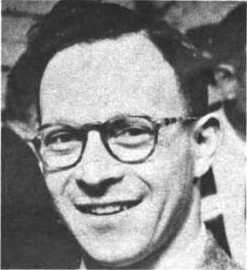Jacques Henri Lartigue was a French photographer and painter, known for his photographs of automobile races, planes and female Parisian fashion models.

The Culture of Africa is varied and manifold, consisting of a mixture of countries with various tribes that each have their unique characteristic from the continent of Africa. It is a product of the diverse populations that inhabit the continent of Africa and the African diaspora. Generally, Culture can be defined as a collective mass of distinctive qualities belonging to a certain group of people. These qualities include laws, morals, beliefs, knowledge, art, customs, and any other attributes belonging to a member of that society. Africa has numerous ethnic nationalities all with varying qualities such as language, dishes, greetings, and dances. However, all African peoples share a series of dominant cultural traits which distinguish African Culture from the rest of the world. For example, social values, religion, morals, political values, economics, and aesthetic values all contribute to African Culture. Expressions of culture are abundant within Africa, with large amounts of cultural diversity being found not only across different countries but also within single countries. Even though African cultures are widely diverse, they are also, when closely studied, seen to have many similarities; for example, the morals they uphold, their love and respect for their culture, as well as the strong respect they hold for the aged and the important, i.e. kings and chiefs.

The culture of Vietnam are the customs and traditions of the Kinh people and the other ethnic groups of Vietnam. Vietnam is part of the Sinosphere due to the influence of Chinese culture on Vietnamese culture, as well as part of Southeast Asia.

Hội An, formerly known in English as Fai-Fo or Faifoo, is a city with a population of approximately 120,000 in Vietnam's Quảng Nam Province and is noted as a UNESCO World Heritage Site since 1999. Along with the Cu Lao Cham archipelago, it is part of the Cu Lao Cham-Hoi An Biosphere Reserve, designated in 2009.

The National Museum in New Delhi, also known as the National Museum of India, is one of the largest museums in India. Established in 1949, it holds a variety of articles ranging from pre-historic era to modern works of art. It functions under the Ministry of Culture, Government of India. The museum is situated on Janpath. The blue–print of the National Museum had been prepared by the Gwyer Committee set up by the Government of India in 1946. The museum has around 200,000 works of art, mostly Indian, but some of foreign origin, covering over 5,000 years.

Traditional African masks play an important role in ceremonies, rituals, and masquerades across West, Central, and Southern Africa. Ceremonies in which masks are worn include harvest celebrations, funerals, rites of passage, weddings, and coronations. In some societies, masks and masquerades are also used to settle disputes and communal conflicts.

The National Handicrafts and Handlooms Museum (NHHM) commonly known as National Crafts Museum in New Delhi is one of the largest crafts museums in India. It is run by the Ministry of Textiles, Government of India. The museum is situated on the corner of the Pragati Maidan, facing the Purana Quila complex. In 2015, the Government of India announced that a Hastkala (handicrafts) Academy would be established in the museum premises, converting some galleries into classrooms. Initial renovations destroyed one of the museum's most well-known artifacts, a room of murals painted by Madhubani artist Ganga Devi, leading to widespread criticism. As of 2019, renovations are still ongoing.

Anne Helene Gjelstad is a Norwegian photographer and fashion designer. As a photographer, she mainly works with portraits, fashion and documentary, but also with interiors, products and lifestyle.

Indira Gandhi Rashtriya Manav Sangrahalaya also referred to as the National Museum of Humankind, or Museum of Man and Culture is a museum located in Bhopal, Madhya Pradesh, India. The museum spreads over an area of about 200 acres on the Shymala Hills in the city. This museum depicts the story of mankind in time and space. It is the largest ethnographic museum in India.

The Zelnik István Southeast Asian Gold Museum is a private museum located on Andrássy Street in the Terézváros district of Budapest, Hungary.
Tomoko Sawada is a Japanese contemporary feminist photographer and performance artist. She has been included in numerous group shows in Japan, Europe and the US. Her first solo exhibition was in 1997 at Japan's Gallery Chat. In 2004 she was awarded the prestigious Kimura Ihei Memorial Photography Award for Young Japanese Photographer as well as the International Center of Photography Infinity Award in the category of Young Photographer.

James "Jimmy" Philip Nelson is an English photographer. He is known for his portraits of tribal and indigenous peoples.

Réhahn is a French photographer based in Hoi An, Vietnam. Known as the photographer that "captures souls", he is recognized for his portraits of Vietnam, Cuba, Malaysia and India, and for his cultural preservation work.
Matika Lorraine Wilbur, whose indigenous name is Tsa-Tsiq, meaning "She Who Teaches," is a Swinomish and Tulalip photographer and educator from Washington state. She is best known for her photography project, Project 562.

Arthur Lavine was an American mid-century photojournalist and magazine photographer who, among other achievements, produced significant documentation of New Caledonia during World War 2.

Melisa Teo is a Singaporean photographer living and working in Paris. For many years, she focused her camera on religious subjects but nature is now the central theme of her photography.

Antoine Schneck is a French visual-art photographer born in 1963 in Suresnes, France.

The Muso Kunda Women's Museum, established in 1995, is an institution dedicated to showcasing and promote the cause of women in Mali. The Museum was founded by Malian feminist and historian Adame Ba Konaré in Bomako. The museum seeks to break stereotypes of women, celebrate their contributions, defend their rights and to create spaces for conversations.

The visual arts of Sudan encompass the historical and contemporary production of objects made by the inhabitants of today's Republic of the Sudan and specific to their respective cultures. This encompasses objects from cultural traditions of the region in North-East Africa historically referred to as the Sudan, including the southern regions that became independent as South Sudan in 2011.

















